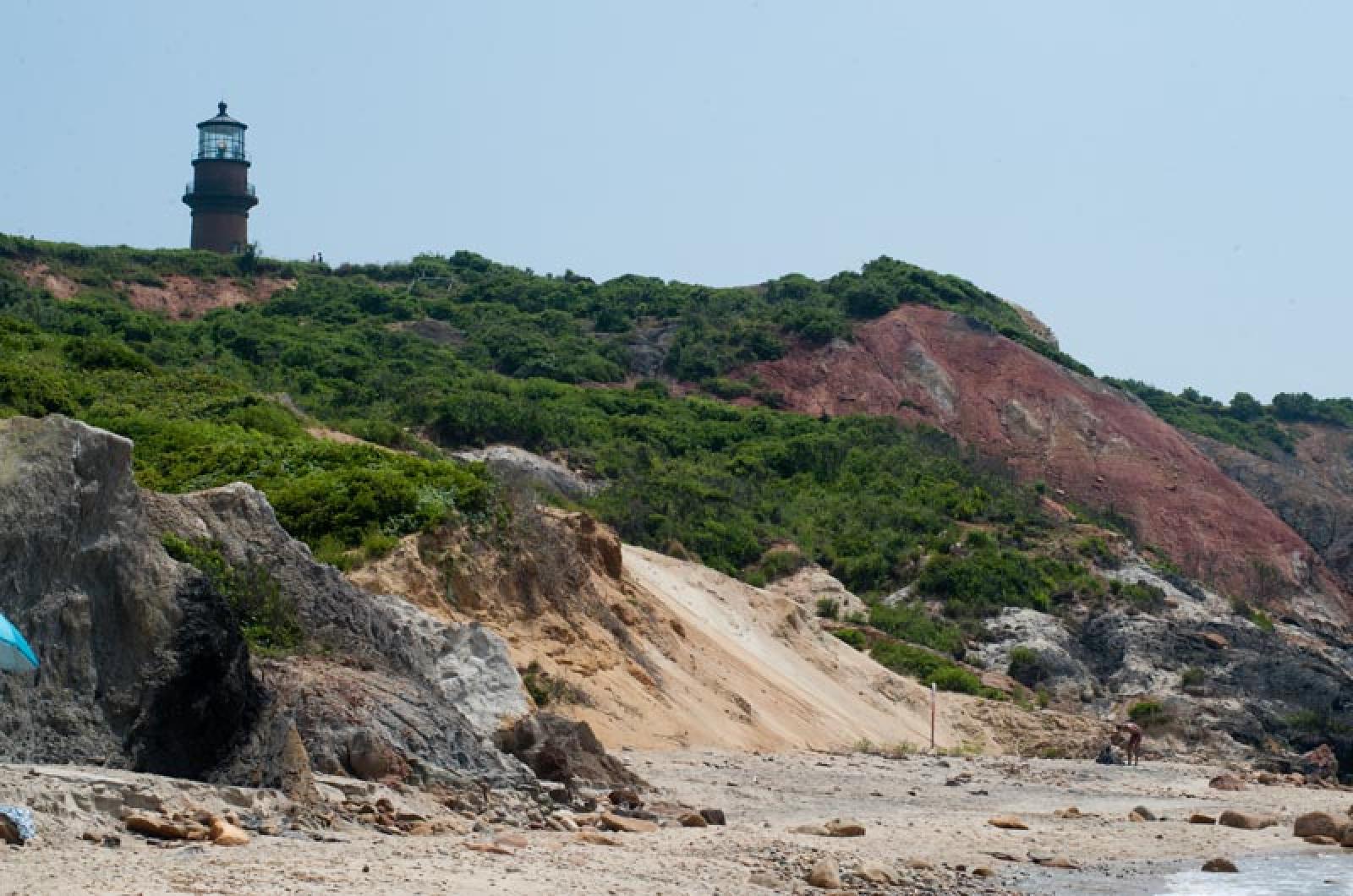As rapid erosion continues to threaten the Gay Head Light, a possible solution emerged this week to help mitigate the situation as the town embarks on a complicated, longer-term project to move the lighthouse.
Lenny Butler, chairman of a town committee working on plans to move the lighthouse, told the Aquinnah selectmen Tuesday that a new geology study shows that groundwater intrusion in the face of the cliffs is causing much of the erosion.
The problem was discovered by geologist Patrick Williams, who was hired by the Martha’s Vineyard Museum to conduct a three-year study of erosion at the cliffs. The museum leases the lighthouse from the U.S. Coast Guard. Sometime this year the Coast Guard is expected to declare the lighthouse surplus government property, clearing the way for the town to take ownership.
Erosion is stemming from two trapped groundwater tables within the cliffside, Mr. Butler told the selectmen. One water table is 20 feet below the surface; the second is 50 feet below. The main aquifer is about 200 feet down, below the cliffs and below sea level. Mr. Butler said John Clark of Island Water Source is proposing to drill a well through the trapped water tables, and then set a screen and gravel trap with the idea that gravity would pull the water down to the main aquifer.
“This is an idea that has a lot of merit,” Mr. Butler said.
Permission for the project is still needed from the Coast Guard, state historic commission, Wampanoag Tribe of Gay Head (Aquinnah) and town planning agencies.
The U.S. Geological Survey has agreed to help analyze collected data, Mr. Butler said. Geologist Bryon Stone, a research geologist specializing in the glacial stratigraphy of the eastern part of the country, will monitor the well project.
“He would like to be present when John Clark drills . . . so he can analyze the layers of clay,” Mr. Butler said. “It’s a great opportunity to find out what is underneath the lighthouse.”
He noted that the Gay Head Cliffs are unique.
“There are very few outcroppings like that that show the dynamics of the ice sheet in terms of folding and uplifting,” Mr. Butler said. “Geologists all over the world are very interested . . . it’s great news.”
Mr. Clark has offered to pay for materials and will only charge for fuel costs and labor, estimated at a couple of thousand dollars, Mr. Butler said. Funds are still available from previously allocated town Community Preservation Act monies.
The town is preparing to take ownership of the 1856 lighthouse and move it to a new location. The cliffs are eroding up to one and a half feet per year, and with recent storms the rate has quickened. The lighthouse is now situated about 50 feet from the edge and must be moved sometime in the next two years. The town lighthouse committee has been consulting with International Chimney Company out of Buffalo, N.Y., on the pending move. International Chimney moved the Sankaty Light on Nantucket, and more recently the Schifter home on Chappaquiddick.
The move is expected to cost about $3 million, and fundraising efforts are under way. Beverly Wright, a town selectman and chairman of the Save the Gay Head Lighthouse committee, said on Tuesday that $180,000 has been raised.
In June the National Trust for Historic Preservation named the Gay Head Light to its 2013 list of America’s 11 Most Endangered Historic Places.
In other lighthouse business Tuesday, the selectmen accepted the lighthouse group’s recommendation that the tower be moved to a town-owned lot located at the top of the circle, about 500 feet southwest of its current location.
“It looks like it’s a very viable site,” Mr. Butler said. The group had previously been considering a location that would have required purchasing real estate.
The selectmen also approved a recommendation to use CPA funds to purchase a small parcel of land adjacent to the lighthouse property. The asking price is between $17,000 and $20,000 and the owners have indicated an interest in selling the property, Ms. Wright said. The purchase would be made through open space funds.
“I think you guys are making great progress,” selectman Jim Newman said. “It’s a fantastic job.”








Comments (3)
Comments
Comment policy »